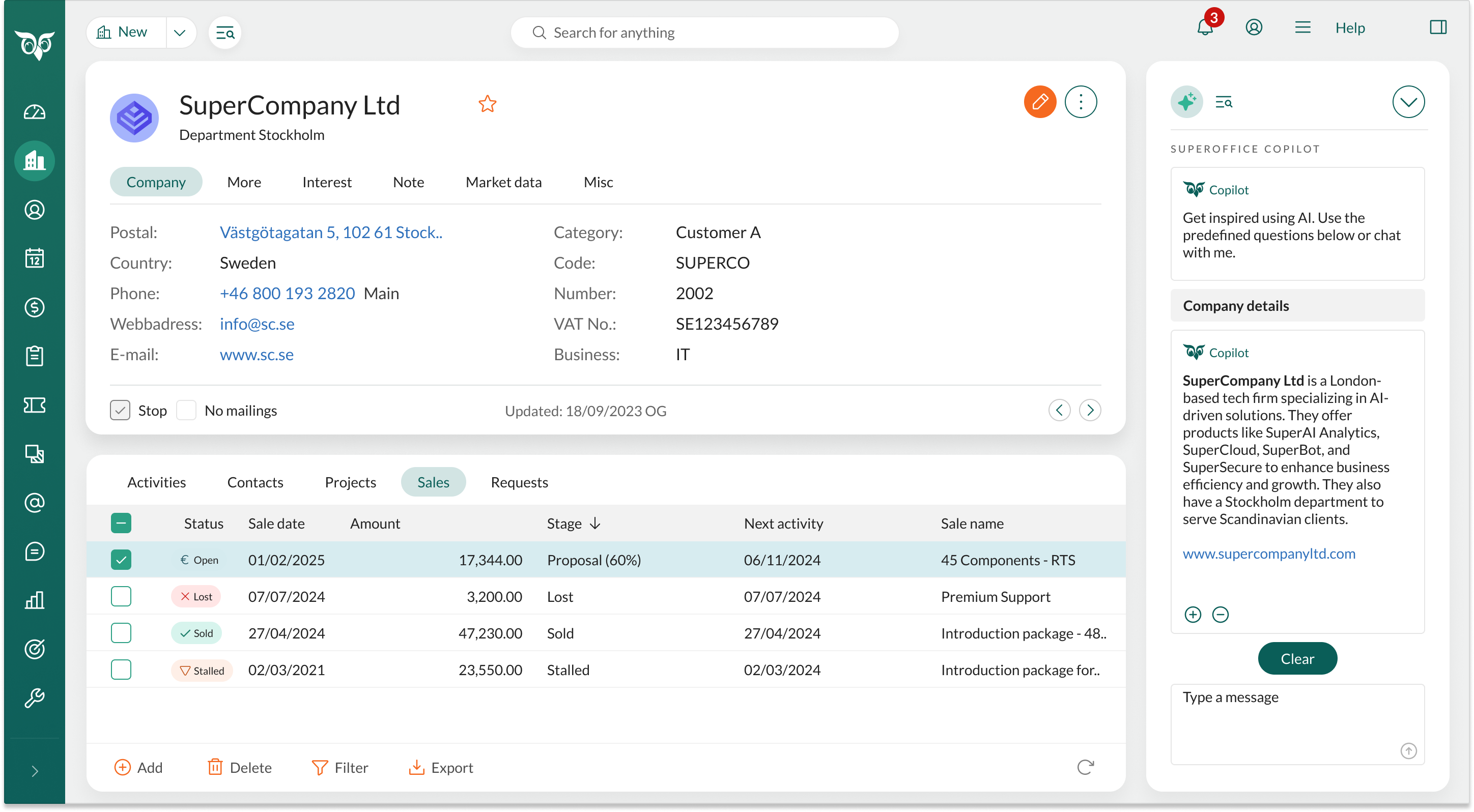As a sales rep, your success depends on how quickly you can respond to prospects.
But when sales content - case studies, presentations, pricing sheet - is scattered across emails, shared drives, or outdated folders, it slows you down.
Instead of spending time selling, you’re stuck searching for the right materials.
A sales CRM solves this by centralizing all sales content, making it easy for you to find, use, and share the right information at the right time.
With a CRM, you can streamline access to sales content, ensure consistency, and speed up response times, so you can focus on what matters most - closing deals.
In this article, you'll explore how a CRM helps sales teams by improving content accessibility, enhancing collaboration, and ensuring that every sales interaction is backed by the right information.
Why easy access to sales content matters
When you can’t quickly find the materials you need, it creates roadblocks in your sales process. Here’s what happens when sales content is disorganized:
- Wasted time: You spend valuable minutes searching through emails and shared folders instead of engaging with prospects.
- Inconsistent messaging: Using outdated or unofficial content can confuse prospects and damage credibility.
- Slower response times: Delayed follow-ups can cause prospects to lose interest or move forward with a competitor.
- Lack of personalization: Without easy access to relevant case studies or proposals, tailoring your outreach becomes difficult.
A CRM eliminates these challenges by making sure that every sales rep has instant access to the right materials at every stage of the sales process.
Why most sales reps neglect a CRM for sales content
Despite the clear benefits, many sales reps don’t take full advantage of their CRM for accessing and managing sales content.
Why? The reasons vary, but they often come down to a combination of habit, perception and a lack of awareness.
1. Old habits die hard
Many sales reps are used to storing their go-to materials in personal folders, emails, or even on their desktops.
They default to what’s familiar, even if it means wasting time searching for the latest version of a proposal or case study.
Without clear training on how a CRM simplifies content access, reps might not see the need to change their approach.
2. Perception of complexity
If a CRM’s document management system isn’t intuitive, sales reps might avoid it altogether.
They assume it will take too long to find what they need, so they resort to old email threads, shared drives, or their memory. If the CRM isn’t well-organized, searching for a document might feel like more work than it’s worth.
3. Lack of awareness about CRM’s full capabilities
Some sales reps view a CRM strictly as a contact and pipeline management tool, overlooking its ability to store and manage sales content.
If they aren’t aware of features like AI-powered recommendations, mobile access, or one-click sharing, they won’t take full advantage of the CRM.

5 Ways a CRM helps you access sales content faster
1. Centralize all sales content in one place
Instead of wasting time searching for documents across different platforms, a CRM stores everything - product sheets, proposals, presentations, and case studies - in one easily searchable location.
You no longer have to dig through email chains or old shared folders.
For example, if a prospect asks for a case study related to their industry, you can pull it up instantly, keeping the conversation moving without delays.
How to get the most out of this:
Use folders and tags in your CRM to organize sales materials by product, industry, and sales stage, making it even easier to find what you need.
2. Ensure content is always up-to-date
Relying on outdated content can cause miscommunication and hurt your credibility.
A CRM ensures that you always have access to the latest, approved versions of proposals, pricing sheets, and product guides.
For example, if marketing updates a sales presentation with new product details, it’s immediately available to you in the CRM - ensuring consistency across your entire sales team.
How to get the most out of this:
Set up alerts and reminders for updates so you’re always aware when new materials are available.
3. Share sales content with prospects instantly
Speed matters in sales.
A CRM allows you to send sales materials directly from the platform, whether through email templates, document links, or built-in messaging tools.
For example, instead of downloading a PDF, attaching it to an email, and writing a separate message, you can send the right document with just one click - all while keeping track of when the prospect views it.
How to get the most out of this:
Use pre-designed AI-generated email templates that automatically include relevant content based on the sales stage.

4. Align sales and marketing for smarter selling
Your marketing team creates sales materials, but if they’re not easy to find, they won’t get used. A CRM bridges the gap between sales and marketing by storing, tracking, and analyzing sales content usage.
For example, marketing can see which content is most frequently used by sales and adjust their strategy accordingly, while you can request specific materials directly through the CRM.
How to get the most out of this:
Use analytics in your CRM to see which materials drive engagement and help close deals.
5. Access sales content anytime, anywhere
If you’re on the go, you need quick access to sales materials from your mobile device.
A CRM with mobile access allows you to retrieve documents, presentations, and customer insights no matter where you are.
For example, if you’re heading into a last-minute sales meeting, you can pull up a relevant case study on your phone and reference it during your pitch.
How to get the most out of this:
Make sure your CRM supports mobile-friendly document access so you can find materials quickly in any situation.
Personalize sales with AI-powered insights
A CRM doesn’t just store sales content - it helps you use it more effectively.
AI-powered CRM tools can recommend the best materials to share based on a prospect’s behavior, stage in the sales funnel, or past interactions.
For example, if a prospect has engaged with a specific product page on your website, your CRM can suggest sending a relevant whitepaper or product comparison guide. This data-driven approach makes personalization easier and more effective.

How to get the most out of this:
Use AI-driven recommendations within your CRM to tailor your outreach without the extra effort.
Conclusion
Often overlooked, a CRM is ideal for sales enablement in managing and accessing key sales content efficiently.
By centralizing materials, automating content sharing, and ensuring real-time access, a CRM allows you to respond faster, stay consistent, and close deals more effectively.
If your team is still manually searching for sales content or struggling with outdated materials, it’s time for an upgrade.
SuperOffice CRM makes it easy to find, organize, and share sales content effortlessly - so you can focus on selling, not searching.
Ready to streamline your sales content access? Book a demo today and see how SuperOffice CRM helps you work smarter, sell faster, and close more deals.



